Who has the right of way when kitesurfing?
Avoid kite collisions
To avoid accidents and collisions in the kitesurfing area, there are simple right-of-way rules that every kitesurfer must know. Just like in road traffic, there are rules in kitesurfing that govern which kiter has priority and must stay on course, and which kiter must take evasive action. When you learn to kitesurf, this is an important part of your theory training and also part of the kitesurfing licence exam. The aim of the right of way rules is to give every kitesurfer simple guiding principles so that no one is put in danger.
Every participant on the water has to behave in such a way that the safety and ease of traffic is guaranteed and that no other person is harmed, endangered or inconvenienced.
International priority rules
When kitesurfing, the International Right of Way rules always apply on every body of water in addition to the rules developed specifically for kitesurfing (e.g. by the IKO and VDWS). The international right-of-way rules also apply on German inland waters:
- Commercial shipping always has the right of way.
- After commercial shipping come sailing vessels, which have the right of way over recreational craft (motorboats or sailing boats that run with a motor), which in turn have the right of way over sports equipment. Kitesurfers are considered sailing vessels in this case.
- Within the group of sailing craft, kitesurfers must give way to sailboats, as sailboats are more sluggish and cannot manoeuvre nearly as fast as a kitesurfer.
- Muscle power before sailing power: swimmers, surfers, bodyboarders, SUP, canoe ... always have right of way.
On the German coast, kitesurfers are seen as "sports equipment" and are thus at the top of the duty to avoid.
So on the German coast you have to avoid everyone.
Kitesurfing Safety Rules
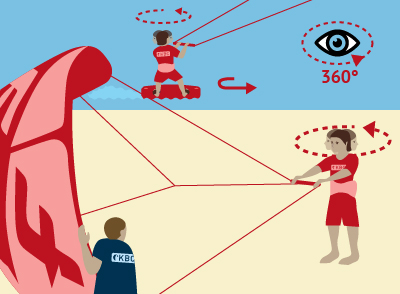
360° view while launching and landing
Before launching and landing your kite, check that there are no hazards in sight and that you are not endangering anyone.
Look in all directions to make sure you are not endangering anyone.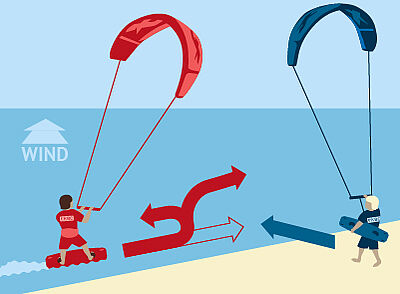
Caution in the take-off and landing zone
Kite surfing in the take-off and landing zone is not permitted. Starting and landing kiters have right of way.
Kitesurfers in the shore area must give way or make room for the kitesurfers taking off and landing.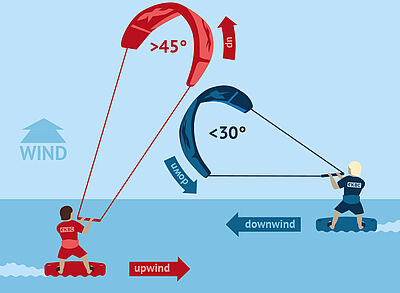
Windward steers up - leeward steers down
When two kitesurfers approach each other, the rider riding higher upwind steers his kite up (>45°). The kiter downwind steers his kite down (<30°).
In this way they prevent the lines from colliding.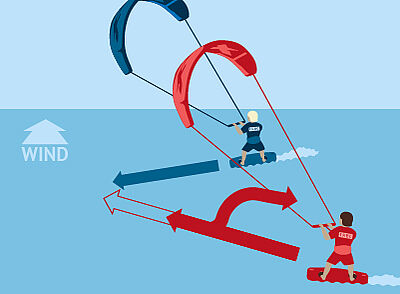
The windward rider gives way to the leeward rider.
The kiteboarder who is riding in the slipstream of the other kiteboarder, i.e. downwind, has the right of way and must keep his/her course, provided he/she sees the kiteboarder upwind at all.
The kitesurfer upwind has to take evasive action.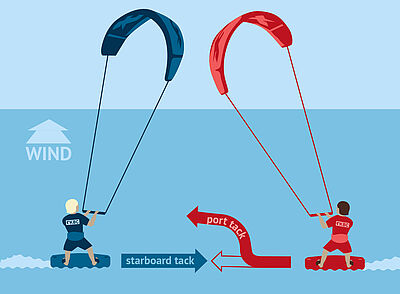
A port tack rider gives way to a starboard tack rider.
If two kitesurfers have their kites on different sides (seen in the direction of travel) and are on a collision course, the kitesurfer who gets wind from the left side (the port side) must give way. The other kitesurfer is obliged to stay on course.
You can remember this quite simply: In head-on encounters, the person with the right hand at the front of the bar has the right of way.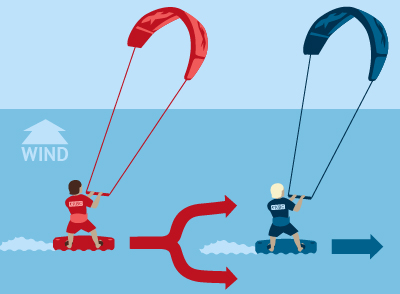
Anyone overtaking keeps out of way to anyone being overtaken
If two kitesurfers are heading in the same direction and the faster kitesurfer behind wants to overtake, he must keep out if way of the slower kitesurfer. If the faster kitesurfer overtakes upwind, he must fly the kite higher, if he overtakes downwind, the kite must come down.
The person being overtaken must stay on course.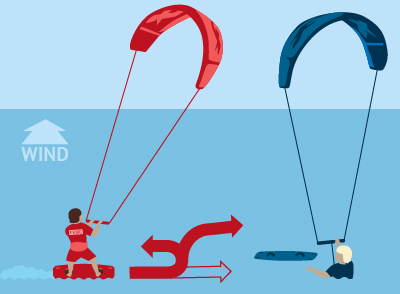
Show consideration
A rider laying in the water and swimming to a lost board or relaunching a kite from the water has the right of way.
Other kitesurfers have to go far around the kitesurfer swimming in the water.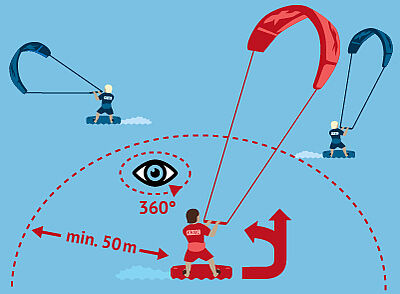
Keeping your distance during manoeuvres
Kiters planning a trick or a turn must keep a distance of at least 50 m from other kiters.
This is how you prevent misunderstandings.... further kitesurfing knowledge
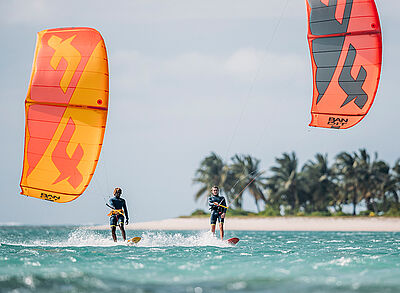
Learning to kitesurf: The best tips for beginners
Do you want to learn kitesurfing? Here you'll find all the information you need to learn how to kitesurf safely and professionally.
The best tips for kitesurf beginners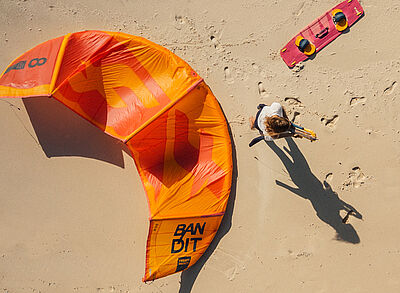
Kitesurf Wikipedia
The language of kitesurfers: Here you will learn all the technical terms, a glossary that explains all the special expressions in an understandable way.
To the Kitesurf Lexicon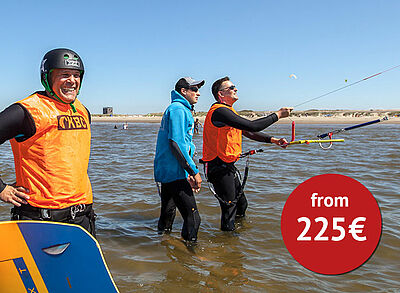
Kitesurf Beginner Course
At KBC you can learn to kitesurf easily, professionally and safely. You will find beginner courses at eight different kite schools worldwide.
Beginner Course from 225€